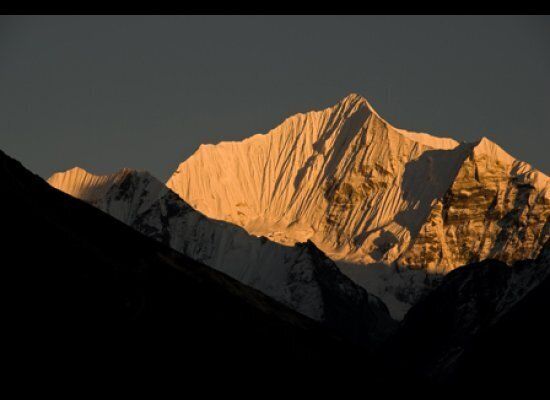During the last years, I have been to Nepal several times. I returned for three weeks this fall, trekking in an area called Langtang. I went there for a recreational purpose but this journey was also a great learning experience about the state of Nepal today.
Home of many of the highest summits on Earth, Nepal has been attracting herds of mountaineers and trekkers for the past 30 years. With each visit, I am myself mesmerized by the beauty and the size of the Himalayan range. Over the years, the media (books, movies, television, internet) have presented a lot of mountaineering epic stories and climbing dramas to the general public. The ethnic group "Sherpa" has even been assimilated in many people's mind with the work of "porter." The Sherpas mostly live in the Everest area called Khumbu and they were indeed essential in Sir Edmund Hillary's successful climb of Mt Everest in 1953. So, naturally, prior to my departure, some friends asked me: "Are you going to have a Sherpa?"
My trek took me through Langtang and an area inhabited by the Tamang people, an ethnic group representing 5% of the population. I had a 20-year-old guide, Ketam, and a porter in his forties, Tritha. They belonged to the Brahman ethnic group and were Christians. Ketam and Tritha were neither Sherpa nor guides by vocation. Ketam was from Gorkha, a poor area at the foot of Manaslu. Having lost his father at the age of five, he was living pretty much on his own, trying to alternate between finding work and taking English classes. Tritha was living in Katmandu, where he also worked in construction. He was married, raising three boys who he could not afford to send to boarding schools.
Tourism brings a certain income to the country, but it is seasonal, and not enough for nearly 30 million people. The main resources are agricultural and the work is done by hand. According to the Central Intelligence Agency, "Nepal is among the poorest and least developed countries in the world, with almost one-quarter of its population living below the poverty line." Ketam and Tritha were struggling regarding income but at least they were somehow managing.
Although Langtang is not as famous as the Everest or Annapurna regions, there was no shortage of views, dramatic landscapes and ups and downs! In addition, my trek seemed to mirror the state of the country. We went from village to village, staying at lodges and people's homes, hiking through magnificent forests and countless cultivated terraces. Millet, barley, buckwheat, potatoes, corn and various vegetables were grown there. Some goats, cows and yaks were also raised, depending on the elevation.
Since the end of the Monarchy in 2006, some people think that the glass (actually the cup of tea there...) is half empty. Unstable politics, unemployment and inflation are indeed major obstacles to the country's rise out of poverty.
Understandably, a fragile constitutional government is not conducive to foreign investments, and health care and education remain at a low level. According to CIA numbers, the literacy level in Nepal is 48.6% for the total of the population, but males reach 62.7% and women only 34.9%. The gender inequality is certainly limiting Nepal's economic growth. Even more heartbreaking is the question of sex trafficking. The latest edition of the CNN Heroes named a Nepali woman, Anuradha Koirala, 2010 Hero of The Year for her work fighting this ignoble crime. Other organizations are also attempting to combat sex trafficking, such as The American Himalayan Foundation, which has been putting over 7000 girls in schools. They all prove again how education, and especially girls education, is a major factor in eradicating violence and helping to pull a country out of poverty.
Nepal's situation may seem rather grim. However, The United Nations just released the 2010 Human Development Report. It shows that Nepal is now ranked 138 out of 169 nations and is among the countries that showed the most improvement. I too saw improvements: some roads now reach previously inaccessible villages, there are more telephones, cell phones and electricity in remote areas. Of course the situations can be very different from one area to another one.
Tithra did not speak any English but his kindness and seemingly endless energy were very touching. Ketam's experience was limited but his beautiful flute playing also showed his musical talent. They both had a huge desire to learn, work, and to see their country rise up for the generations to come. Nepal has a long way to go and some Nepalese politicians need to place the interests of their country first, so that decisions can be made which are in Nepal's best interest. With some foreign help, I would like to hope that the tea cup is half full...
